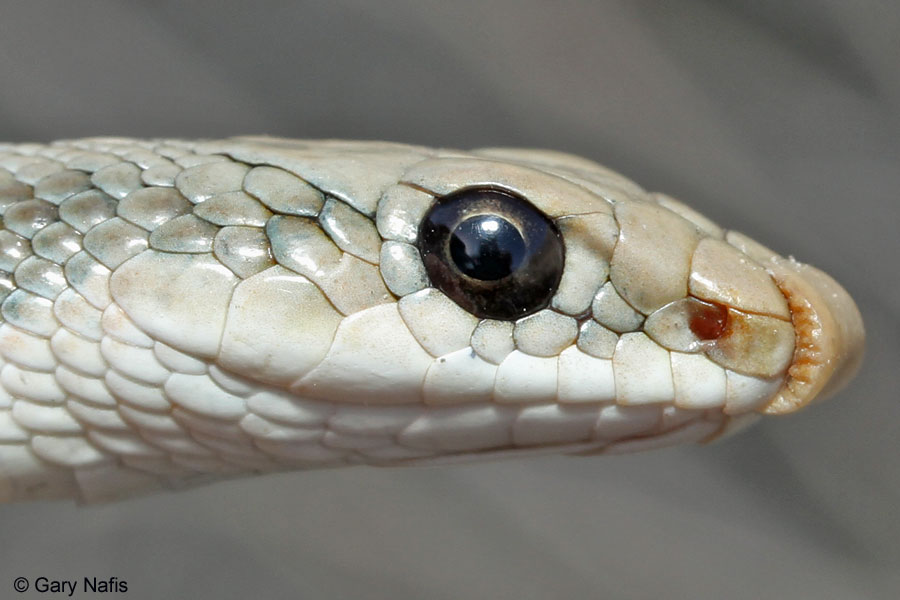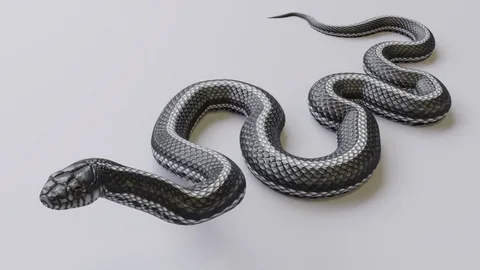The bowtie snake is an intriguing name, often sparking curiosity among snake enthusiasts and casual wildlife observers alike. Despite the captivating label, “bowtie snake” is not a universally recognized species but rather a descriptor for certain snakes with unique patterns resembling a bowtie. This unique pattern, combined with the mysterious world of reptiles, gives rise to much curiosity and speculation. In this article, we’ll dive into what the bowtie snake represents, explore the characteristics that contribute to this appearance, and discuss related species known for similar distinctive markings.
Understanding the Bowtie Snake Phenomenon

“Bowtie snake” is a term often used to describe any snake that has a pattern resembling a bowtie on its skin. This bowtie-like marking can vary in appearance and size depending on the species and age of the snake. While no official species of “bowtie snake” exists in herpetology, snakes bearing such distinct patterns are commonly found in the wild and in reptile collections around the world. Their unique appearance is not only visually striking but may also play roles in camouflage, mating, or territorial behavior.
The Mystery Behind the Pattern
The pattern seen on a “bowtie snake” can have several natural explanations. Certain genetic traits and environmental factors contribute to the development of markings that resemble bowties or similar shapes. Such patterns may help the snake blend in with its surroundings, providing camouflage from predators. On the other hand, these unique markings may also be a result of selective breeding in captivity, where breeders aim to emphasize unusual and aesthetically pleasing patterns.
Common Species Known for Bowtie-Like Markings
Several snake species are more likely to display patterns that resemble a bowtie. Here are a few examples of commonly known snakes with this characteristic:
- Ball Python: Known for their docile nature and variety of color patterns, ball pythons are popular in captivity. Certain morphs or variations may exhibit bowtie-like markings, adding to their appeal among collectors.
- Corn Snake: With a variety of color morphs, corn snakes can also exhibit patterns that resemble a bowtie. Corn snakes are often found in the wild with intricate markings that serve as camouflage.
- Kingsnake: Kingsnakes are known for their banded patterns, but certain individuals may display markings that resemble a bowtie. This can vary depending on the subspecies and geographic origin of the snake.
- Boa Constrictor: Boa constrictors often have unique markings along their bodies. Certain individuals may feature patterns that appear to mimic a bowtie, particularly in some subspecies or morphs.
Why Do Some Snakes Develop Bowtie Patterns?
The appearance of a bowtie pattern in snakes can be attributed to various biological and environmental factors. Genetic diversity and evolution play significant roles in the development of unique patterns on a snake’s scales. Over time, these patterns may have been naturally selected due to their potential advantages in the wild.
Camouflage and Survival
For many species, camouflage is essential for survival. The bowtie pattern may help a snake blend into specific environments, making it less visible to predators or prey. Snakes that inhabit forested areas with dappled light and shadows may develop more complex patterns to mimic the textures of leaves and branches.
Signaling to Other Animals
Another potential reason for the bowtie snake pattern could be related to signaling. In certain species, unique markings may serve as warnings to other animals. For example, a bright or conspicuous pattern might alert potential predators to stay away, as the snake may be venomous or otherwise dangerous. Although the bowtie snake is not a designated species, some snakes with similar markings could use these patterns to communicate with other animals in their habitat.
Genetic Variation and Morph Breeding
Genetic variation naturally gives rise to various skin patterns in snakes, which breeders can enhance through selective breeding practices. In the exotic pet trade, snakes are often bred specifically for unique patterns or colors. This practice, known as “morph breeding,” has led to the development of many color variations and patterns that would be rare or nonexistent in the wild. Bowtie patterns can be one of these outcomes, especially in snakes like ball pythons and corn snakes.
How to Identify a Bowtie Snake

If you’re interested in identifying snakes with bowtie snake-like patterns, it’s helpful to know what specific features to look for. Snakes that exhibit these patterns tend to have symmetrical markings on their dorsal (back) side, often with contrasting colors that make the “bowtie” stand out.
Look for Symmetry in Patterns
A key characteristic of the bowtie pattern is its symmetry. This pattern typically appears near the head, back, or tail and is usually symmetrical on both sides. Snakes like the ball python and certain corn snake morphs may display these symmetric patterns, which can sometimes look like bowties due to the shape and placement of the markings.
Note the Color Contrast
Color contrast also plays a role in making the bowtie snake pattern noticeable. For example, a snake with a dark background and light-colored markings may have a more pronounced bowtie appearance. Alternatively, snakes with vibrant colors such as reds, yellows, and whites can also produce bowtie-like effects when their patterns are contrasted with darker patches.
Observe Size and Shape of Markings
The size and shape of the markings may vary between individuals and species. Some snakes may have a single bowtie-like marking, while others could have a repeating pattern along their body. For instance, the markings on a kingsnake or boa constrictor may appear smaller and more frequent, resembling a string of bowties along the length of the snake’s body.
Popular Bowtie Snake Morphs and Color Variations

In the world of reptile enthusiasts, certain morphs of snakes are particularly prized for their unique markings. Morphs are selectively bred variations that result in distinct colors and patterns, often fetching higher prices due to their rarity and visual appeal.
Ball Python Morphs
Ball pythons have one of the widest selections of morphs among pet snakes, and some of these morphs exhibit markings that resemble bowtie snake. Examples of ball python morphs with notable patterns include the “Clown” and “Spider” morphs, which sometimes develop symmetrical markings that give a bowtie effect.
Corn Snake Morphs
Corn snakes are also popular in the exotic pet market, especially among beginners due to their manageable size and calm temperament. Their morphs are bred for a variety of colors and patterns, some of which create bowtie snake-like designs along their bodies. Examples include the “Okeetee” and “Anerythristic” morphs, which may display markings that are symmetrical and distinctive.
Boa Constrictor Morphs
Boa constrictors, though larger and requiring more care than other pet snakes, also have unique morphs prized by collectors. Some morphs feature patterns that closely resemble bowties, adding to their appeal among snake enthusiasts. The “Hypo” and “Jungle” morphs, for example, can display intricate and symmetrical markings.
Care Tips for Snakes with Unique Patterns

Snakes with bowtie snake markings are often kept as pets due to their fascinating appearance. However, caring for these snakes requires special attention to their needs, just as with any other pet reptile.
Provide Proper Habitat and Enclosure
Ensuring a proper habitat is crucial for the well-being of any pet snake. Snakes with bowtie-like patterns, such as ball pythons and corn snakes, thrive in secure, well-maintained enclosures with regulated temperatures and humidity levels. It’s essential to understand the specific habitat requirements for the species you have.
Ensure a Balanced Diet
Feeding your snake the right diet is essential for its health. Most pet snakes, including those with bowtie-like markings, require a diet of pre-killed or frozen rodents. Research the dietary needs of your snake species, and consult a veterinarian for advice on a suitable feeding schedule.
Regular Health Checks
Regular check-ups with a veterinarian who specializes in reptiles can help maintain your snake’s health. Pay attention to signs of illness, such as changes in appetite, behavior, or skin appearance. Snakes with unique patterns, like the bowtie snake varieties, require just as much care and attention as any other pet.
Conclusion
The bowtie snake, while not a distinct species, captures the imagination of snake enthusiasts and collectors due to its unique markings. Whether it’s a ball python, corn snake, or boa constrictor, the bowtie-like pattern offers a glimpse into the fascinating world of reptiles and the genetic diversity they exhibit. Understanding what makes these markings unique, along with providing proper care, can enhance the experience of owning one of these captivating creatures.















Leave a Reply